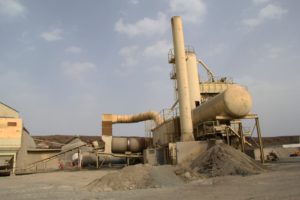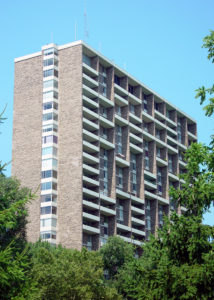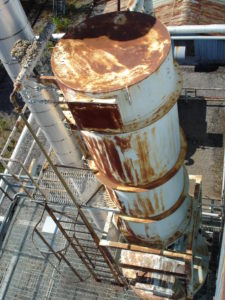 By now, every Australian would know that the entire state of South Australia experienced a power system failure as severe storms with high winds uprooted 22 high voltage power pylons cutting off a major part of system generation at Port Augusta. For about 10 hours on Wednesday, we all effectively went ‘off grid’. Rolling blackouts or brownouts are not uncommon but this was the first time that an entire state has been without power.
By now, every Australian would know that the entire state of South Australia experienced a power system failure as severe storms with high winds uprooted 22 high voltage power pylons cutting off a major part of system generation at Port Augusta. For about 10 hours on Wednesday, we all effectively went ‘off grid’. Rolling blackouts or brownouts are not uncommon but this was the first time that an entire state has been without power.
At 3.30pm light and power was cut to my office. The desk top computer stopped – the laptop, however, continued working for another 5 hours. The land line phone connection ceased – but the mobile did just fine. Televisions stopped but information got out to everyone via Facebook on mobile connections. Power was mostly resumed at 1.10 am Thursday but, for ten hours, the battery was king!
Those in government responsible for the future of our infrastructure might well have asked themselves whether climate change might not engender future storms like this and, reflecting on the fact that the statewide blackout was caused by the necessity to protect the integrated system, perhaps they might also have asked themselves whether the efficiency benefits of integration might not come at a cost? They might then have considered whether a more disintegrated system of power generation and distribution, such as is now available with the growth of renewables such as wind and solar might not have mitigated the impact? After all, when the system goes down, those who are not reliant on it benefit. So it is curious that the Prime Minister and assortment of others antagonistic to wind and solar should blame renewables for the failure!
Or perhaps not so curious if the aim is to protect incumbent power and distribution networks? The electricity industry is well aware of the threat of wind and solar to its generation and distribution networks when long lasting batteries are developed, which is now, perhaps, not more than five years away.
Our Question today: Given that battery development will represent a major disruption to power production and distribution what should be the intelligent, forward looking, attitudes of our government – to block, or to adapt?
 This is the fourth of a series of posts by Mark Neasbey, a director in the Australian Centre for Value Management examining the role of the planning budget. In the first Mark considered the differing attitudes that may be taken to strict adherence to the budget and in the next two, he gave examples of the problems this had created for a major teaching hospital and for a mining operation. In this, the last of the present series, Mark considers how a planning budget can be constructed and utilized to smooth the path of the capital budget.
This is the fourth of a series of posts by Mark Neasbey, a director in the Australian Centre for Value Management examining the role of the planning budget. In the first Mark considered the differing attitudes that may be taken to strict adherence to the budget and in the next two, he gave examples of the problems this had created for a major teaching hospital and for a mining operation. In this, the last of the present series, Mark considers how a planning budget can be constructed and utilized to smooth the path of the capital budget.
It’s good business practice to require planning for asset projects to look well ahead of the short-term i.e the current financial reporting period. This is because assets typically last many years and impose long-term costs to the business or government service.
Good practice also involves life-cycle planning around the asset project – what it costs to establish, what needs to be spent to keep it operating, periodic costs for replacement and renewal of plant and equipment and also periodic refurbishment necessary to sustain functionality, safety, image etc. This extends to considering disposal – when an asset is no longer needed – what has to be done to get rid of it. This principle applies equally to physical assets and soft assets such as computer software or systems.
So when an initial concept is proposed, what sort of things need to be addressed and what’s the significance of these to the budget?
Well a key starting point has to be determining its purpose – what is the asset supposed to do? What are the business or service functions that the asset must accommodate or support? Why can’t these functions be undertaken some other way, without the need for the asset project?
These questions can’t be answered without research, we need to test and clarify the scope of the project so we can set a reasonable capital budget. That means we have to start with a planning budget so the planning and analysis work can be done to decide a) the functions that the organisation needs to deliver; b) the options that should be considered for delivering those functions – including non-asset strategies; c) determine the relative merits of the options – key pros and cons, including business (service delivery) risks.
 This post by Mark Neasbey, a Director of the Australian Centre for Value Management, is the third in a series of posts on the role of the capital budget in infrastructure decision making. In this post Mark examines the issues facing a mine expansion.
This post by Mark Neasbey, a Director of the Australian Centre for Value Management, is the third in a series of posts on the role of the capital budget in infrastructure decision making. In this post Mark examines the issues facing a mine expansion.
The mining operation planned to do two things – one, expand its processing facilities to deliver increased product volumes to exacting customer specifications and two, change from road to rail transport for the whole journey to the port. An important third aspect of importance was getting the timing to market right to optimise prices and revenue.
A design for the processing facility had been prepared as well as a proposed rail alignment and rolling stock and operating schedule, which enabled a direct loading from the processing plant to train wagons. Existing operations relied on road transport to a rail transfer point some 40kms from the mine plant. This needed a large workforce and truck fleet and associated scheduling activities to meet shipping schedules at the port.
In this instance the key decisions that the company executives had to make were how much disruption to supply its customers could tolerate during the weeks needed to expand the plant and what would be the reliability of the delivery program to meet the market opportunity. Their value management study helped them to assess the options to refine both the plant design and the proposed rail arrangements in a way that minimised disruptions to the existing plant operations – so product could still flow to customers and continue to generate cash flow for the business. This was possible with a relatively minor increase in use of capital funds in the works at the plant with the rail works staging able to occur in parallel.
Whilst ongoing operating costs were reduced and volumes (and price yield) increased there were some additional asset implications. A significant reduction in the workforce enabled a portion of the accommodation, recreation etc. facilities to be redeployed to another operation and otherwise disposed of, reducing ongoing site maintenance cost.
Concluding Comments A budget for asset projects is expected to change during the life of the project – but why it changes and whether that is up or down is something that must be actively managed. It should not be blindly adhered to, let alone ignored. An asset project affects operating (recurrent) costs and potential revenue as well as capital, which are also important considerations for the decision-makers.
Question for today: What ‘take-away’ do you take away from this?
 This post is by Mark Neasbey, a Director of the Australian Centre for Value Management. In this post Mark presents an example of the dilemma of the different attitudes to planning budgets identified in his last post – and how they may be overcome.
This post is by Mark Neasbey, a Director of the Australian Centre for Value Management. In this post Mark presents an example of the dilemma of the different attitudes to planning budgets identified in his last post – and how they may be overcome.
A major teaching hospital complex had reached a decision point about what the project must deliver vs the projected capital cost. Hospital facilities undergo periodic redevelopment driven by substantive changes in health care practices (models of care) and capacity to service growing populations.
Here the planning involved creating new facilities and demolishing older buildings. The models of care and health outcome objectives were clearly defined and endorsed but were complicated by the arrangement of services across the campus and the recurrent cost constraints on the health services. Moving functions around to create space for the new facilities was one aspect and another was inefficient service delivery arrangements which had evolved over time and which were compromised by the inflexibility of the existing facilities.
So it was not possible and not appropriate to just focus on the capital project cost.
These tensions were recognised and tested in a value management study process that worked through the schematic design, the relationships between services across the campus and the sequence and timing of moving services around and into the new facilities. This made it clear that the space requirements and associated capital project budget exceeded the original estimate.
Question was: Should the budget be left where it was and the scope of the initial redevelopment stage reduced, or should the budget be increased to enable it to be made larger?
By focusing on the clinical outcomes and hospital operating (i.e. recurrent) costs it was clear to senior management that a change in scope for the first stage was vital. Adding extra floor space in stage 1 enabled significant reduction in operating costs ($10m p.a.). But the extra $30m for stage 1 also enabled the second stage to be a much lower cost development – a simpler demolition and a ‘cleaner’ new build.
Question for today: What ‘take-away’ do you take away from this?
 This post by Mark Neasbey, a director in the Australian Centre of Value Management is the first of four that looks into the role of the budget in infrastructure decision making.
This post by Mark Neasbey, a director in the Australian Centre of Value Management is the first of four that looks into the role of the budget in infrastructure decision making.
We are about to undertake a capital project for which we need a planning budget. We have chosen a figure that we think is affordable and justifiable and off we go with planning. We employ architects, engineers, cost planners and other specialists to work up a proposal. They’re all qualified experts so we can rely upon their advice to give us a value for money solution. Right?
But now we strike a problem. To some the capital project’s budget figure becomes the target to realise and push beyond, because once the decision-makers see the brilliance and worth of the proposal they’ll get the extra money – that way we don’t have to compromise on anything! Right?
For others, it’s the opposite – a barrier that must not be exceeded – the limit that has to be imposed irrespective of what compromises must be made. We simply cannot afford to pay any more. This is because no capital project should be seen in isolation of the whole business. The organisation’s other priorities will also need to be appreciated so the best overall outcomes can be realised.
Both attitudes have some merit.
Our question today is: How can they be reconciled?
 Recently at a workshop of asset managers I suggested that the role of Strategic Asset Managers in today’s environment will be to anticipate the changes that are affecting their organisations policies and be ready to address them. I asked them to come along prepared to discuss the key trends affecting their organisation and what they were planning to do about it.
Recently at a workshop of asset managers I suggested that the role of Strategic Asset Managers in today’s environment will be to anticipate the changes that are affecting their organisations policies and be ready to address them. I asked them to come along prepared to discuss the key trends affecting their organisation and what they were planning to do about it.
The key trend identified was diminishing or uncertain funding. No surprises there.
What I found interesting, however, was the way that almost all of them were coping with this situation. It was to place a greater focus on the ‘customer experience’ and to broaden the scope of their activities. A university asset manager said that they were seeking to provide staff, students and researchers with ‘desirable experiences’. The airport manager was looking to extend the airport facilities to attract not only passengers and those who came to greet or see them off, but people who would come to the airport for the events or activities it provided, rather than for the intention of flying. The asset manager from the electricity authority said that they now saw themselves, not in the electricity business but in the energy business. He too, saw the need to focus on customer experience. In fact, he recognised that in this new environment that ‘asset management’ and ‘marketing’ had to come a lot closer, for they had a common goal.
Infrastructure management and marketing! An interesting combination.
So my question for today is: Is this the way you see infrastructure moving?
 I am often told that I should be targetting ‘Talking Infrastructure’ at the politicians because they are the real decision makers. But are they?
I am often told that I should be targetting ‘Talking Infrastructure’ at the politicians because they are the real decision makers. But are they?
Politicians are like a jury. The lawyers make their best case and the jury chooses between them. The result depends on the skill of the lawyers who have to examine the facts before them, assess their validity, make a case and then present it as persuasively as they can. Now the lawyers may not have all the facts, or the jury may be influenced by matters other than the facts – the look of the defendant, perhaps. It may be that the guilty go free, or the innocent are convicted. No reasonable person could think that this is ‘fair’ or ‘right’, but it is the way we discover the truth under the legal system we have. Importantly the jury is chosen deliberately for its representativeness, not analytical skills. To get better results from our jury system we therefore work on improving the system – and the quality of the lawyers who analyse and present the information.
Politicians are like a jury. Infrastructure analysts examine the issues, collect data, analyse it, make a case and present it. They are like the lawyers. The politicians then have to take a stand. The analysts MAKE the case. The politicians TAKE a stand. That is why I refer to the analysts as ‘infrastructure decision MAKERS’ and the politicians as ‘infrastructure decision TAKERS’. Semantics perhaps, but a useful distinction.
It is also why I am targetting this Talking Infrastructure Blog at the analysts and not at the politicians. It is the analysts who can make a difference.
Whether a proposal ‘gets up’ depends on
- the merits of the proposal itself,
- the skill with which it is presented, and
- the match between it and the needs of the politicians
All of these (yes, even the last) are within the capacity of the analyst – the infrastructure decision maker – to improve. End of manifesto!
Question for today: Do you believe we need to better understand the needs of politicians. Why or why not?
 In his post on August 12, Mark Neasbey of the ACVM spoke about the infrastructure decisions we make when we don’t think we are making any. Dangerous! If you haven’t read it yet, it’s worth it! Click here. And here is another example of unconscious decision making.
In his post on August 12, Mark Neasbey of the ACVM spoke about the infrastructure decisions we make when we don’t think we are making any. Dangerous! If you haven’t read it yet, it’s worth it! Click here. And here is another example of unconscious decision making.
At his last school, surplus capacity was up around 45-50% and the school principal approved the use of one of the vacant classrooms as a drop in centre for parents and carers.
Now he was also on the council for another school, one his own children attended. This school was in a growth area and had no surplus capacity, but when he spoke of his drop-in centre, the other council members thought it a good idea and since school extensions were being designed at the time, the second school agitated to have a drop in centre designed into the new building.
The designer liked the idea and in the next school design he was involved in, he automatically included a drop in centre.
Now what had begun as a good use of surplus capacity, a “one off”, had become a new standard. Who approved the ‘new standard’? In all likelihood, no-one. When was a conscious decision on the new standard taken? In all likelihood, never. Was the corporate level (in this case the Education Department) even aware of the change? In all likelihood, not at all!
This is infrastructure or service level creep. Everyone defends it. Why wouldn’t they? A better service at no cost is what we should all aim at. But what is ‘no cost’ when we already have surplus infrastructure, becomes very costly indeed when the extra space is being deliberately built in.
This is not to argue against drop-in centres, per se. They can be a great addition to a school and to the community. But rather to suggest that the decisions be taken advisedly. To do this we must first be aware of it!
Question: What examples of infrastructure creep (or service level creep) can you think of?

obsolete power plant
If you want to know why something is said or done, ’follow the dollar’ – in other words, find out who stands to benefit. Earlier this week an article in the Brisbane Times argued that future generations would ‘rue the day’ that the Government failed to take advantage of current low interest rates to invest more in infrastructure. The arguments were being put forward by a multinational company that constructs infrastructure! It is clearly in their interests, but is it in ours? The writer of the report wrote “Borrowing money to build the infrastructure for a future economy is not only the right thing to do, it is absolutely essential to our future economic prosperity.” But is it?
With low interest rates why isn’t the private sector investing if it is such a good idea? May be they cannot see the demand necessary to justify the extra capacity they would be creating? Also they are aware that the economy is in a state of flux and are probably, and sensibly, seeking more clarity on the future before they consider committing shareholder funds. Do we really want our governments to be any the less wise with our funds?
Economists, looking only at the cost of borrowing, often argue that we should borrow to spend at times when interest rates are low. In a recent ABC news item, Glenn Withers, economist at the ANU, argued that current low interest rates meant this was a good time to invest in infrastructure but Gary Bowditch, Head of the Better Infrastructure Initiative at Sydney University said the price of money and historically low interest rates were “completely meaningless in the current context, first we needed to be choosing the right projects”.
Question: Who do you agree with, and why?

Recent Comments